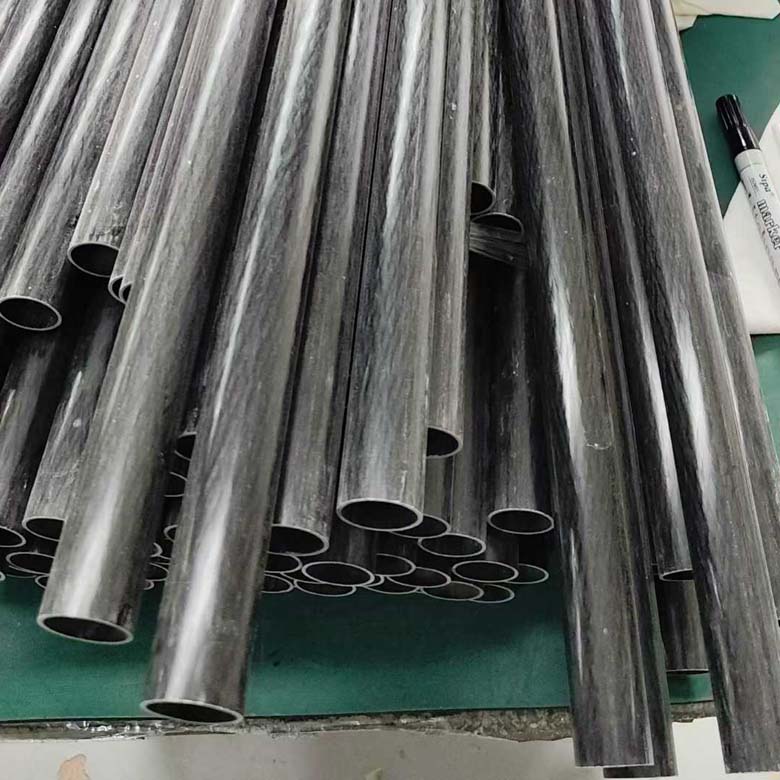Introduction: Why Engineers Struggle With Carbon Fiber Tube Selection
A أنبوب ألياف الكربون looks simple at first glance. Long, black, sleek. Yet choosing the wrong grade or profile can wreck performance and drain budgets. Engineers often face trade-offs between weight, strength, stiffness, and cost. With so many variations—carbon fiber buffer tube, carbon fiber round tube, square carbon fiber tube, pultruded carbon fiber tube—the margin for error runs high.
From aerospace booms to bicycle frames, selecting the right form like a 1 inch carbon fiber tube or even a massive 4 inch carbon fiber tube can determine project success. Let’s dig into the eight mistakes often made and outline smarter paths for buyers and engineers alike.
1: Ignoring the Right Fiber–Matrix Match in Carbon Fiber Tubes
Every carbon fiber tube relies on two parts: the fiber itself and the surrounding resin. Engineers sometimes focus only on fiber grade while forgetting how the resin matrix affects performance. Epoxy-based resins handle fatigue far better than polyester ones, especially for high-stress projects.
الحل: Always ask suppliers about both fiber and resin. A 1.5 inch carbon fiber tube with a poor resin system may fail quicker than a thinner carbon fiber round tube with a stronger matrix.
2: Overlooking Voids and Manufacturing Defects in Pultruded and Roll-Wrapped Tubes
Air bubbles, resin-rich spots, and wrinkles in layup can compromise tube strength. Pultruded carbon fiber tube options are usually more consistent, but they lack the same directional control that roll-wrapped ones offer. Engineers who skip inspection risk hidden failures.
الحل: Work only with vendors that provide quality certificates and visual inspection reports. Small voids in a carbon fiber rectangular tube can lead to cracks under compression.
3: Neglecting Failure Modes Early in Carbon Fiber Tube Design
Unlike steel, composites fail in multiple ways—splintering, delamination, or fiber breakage. Designing a square carbon fiber tube without analyzing bending loads can mean early failure.
الحل: Run simulations for expected stresses and consider testing prototypes. A 1 carbon fiber tube for robotics arms should be designed for shear and torsion, not just axial tension.
المراجع:
1. ألياف الكربون المثالية للطائرات بدون طيار: مواد الصفائح والخيارات
2. كيف تقطع أنبوب ألياف الكربون؟
3. فهم اختبارات الصلابة والضغط لأنابيب ألياف الكربون
4. ألياف الكربون مقابل قضيب الجرافيت: أيهما يناسب احتياجاتك بشكل أفضل
5. أوقفوا كوارث الطائرات بدون طيار! كيف تغير تقنية ثني أنابيب ألياف الكربون عالية الأداء كل شيء
4: Discounting Anisotropy and Directionality in Carbon Fiber Tubes
Carbon fiber does not behave the same in every direction. A carbon fiber buffer tube reinforced only along its length may resist stretching but snap when twisted. Engineers often assume isotropic performance, similar to metals, which can be disastrous.
الحل: Select fiber orientations carefully. For rotational shafts, combine unidirectional layers with woven fabrics. For aerospace booms, a 4 inch carbon fiber tube with multiple layup angles handles torsion better.
5: Skipping Non-Destructive Testing and Inspection Planning
Some engineers only test at the final stage. By then, fixing defects costs far more. Non-destructive tests like ultrasound or X-ray scanning detect delamination early.
الحل: Plan inspection methods before mass production. A carbon fiber round tube batch can be checked quickly, preventing future recalls.
6: Misjudging Cost vs. Lifecycle Benefits of Carbon Fiber Tubes
Buyers often chase the cheapest option upfront. A bargain 1.5 inch carbon fiber tube may fail after two years, while a higher-grade option lasts a decade. Over a full lifecycle, cheap turns expensive.
الحل: Evaluate cost against service life. For high-wear environments, a premium pultruded carbon fiber tube often saves money in the long run.
7: Not Considering Environmental and Sustainability Impacts
Some engineers ignore the long-term effects of disposal or recycling. As carbon fiber demand grows, sustainability weighs heavier. Choosing recyclable resins or regrind-friendly designs reduces future waste.
الحل: Ask your supplier about end-of-life planning. A carbon fiber rectangular tube made with thermoplastic resin can be repurposed more easily than thermoset versions.
8: Overlooking Fit and Connection Challenges
A common oversight lies in assuming carbon fiber tubes connect as easily as metal pipes. Bonding, bolting, or clamping requires special attention. A square carbon fiber tube may not sit snug in standard hardware, leading to stress concentration.
الحل: Plan joining methods early. Custom fittings or adhesives tailored to fiber tubes avoid later headaches.
Tips for Smarter Carbon Fiber Tube Selection
To avoid repeating the same pitfalls, here are practical strategies engineers can follow:
Match Geometry to Application: Use carbon fiber round tube for rotational shafts, rectangular tubes for beams, and square tubes for frames.
Consider Load Paths: A 1 carbon fiber tube may suit drones, while a 4 inch carbon fiber tube supports large aerospace or marine systems.
Balance Strength and Weight: Always compare carbon fiber tube strength against project requirements instead of defaulting to thicker walls.
Request Test Data: Don’t rely only on supplier claims—ask for tensile, compressive, and shear reports.
Factor Environment: High UV exposure or marine settings demand special coatings or resin systems.
الخاتمة
Carbon fiber tube technology delivers stunning strength-to-weight advantages, but only when chosen wisely. Engineers often trip over fiber-resin mismatches, ignore anisotropy, or skip inspection altogether. Yet each mistake carries a fix. By planning fiber orientation, verifying manufacturing quality, and aligning cost with lifecycle performance, projects achieve both durability and efficiency. Whether you’re weighing a slim 1 carbon fiber tube for robotics or a heavy-duty 4 inch carbon fiber tube for aerospace, thoughtful selection keeps mistakes at bay and designs flying high.






